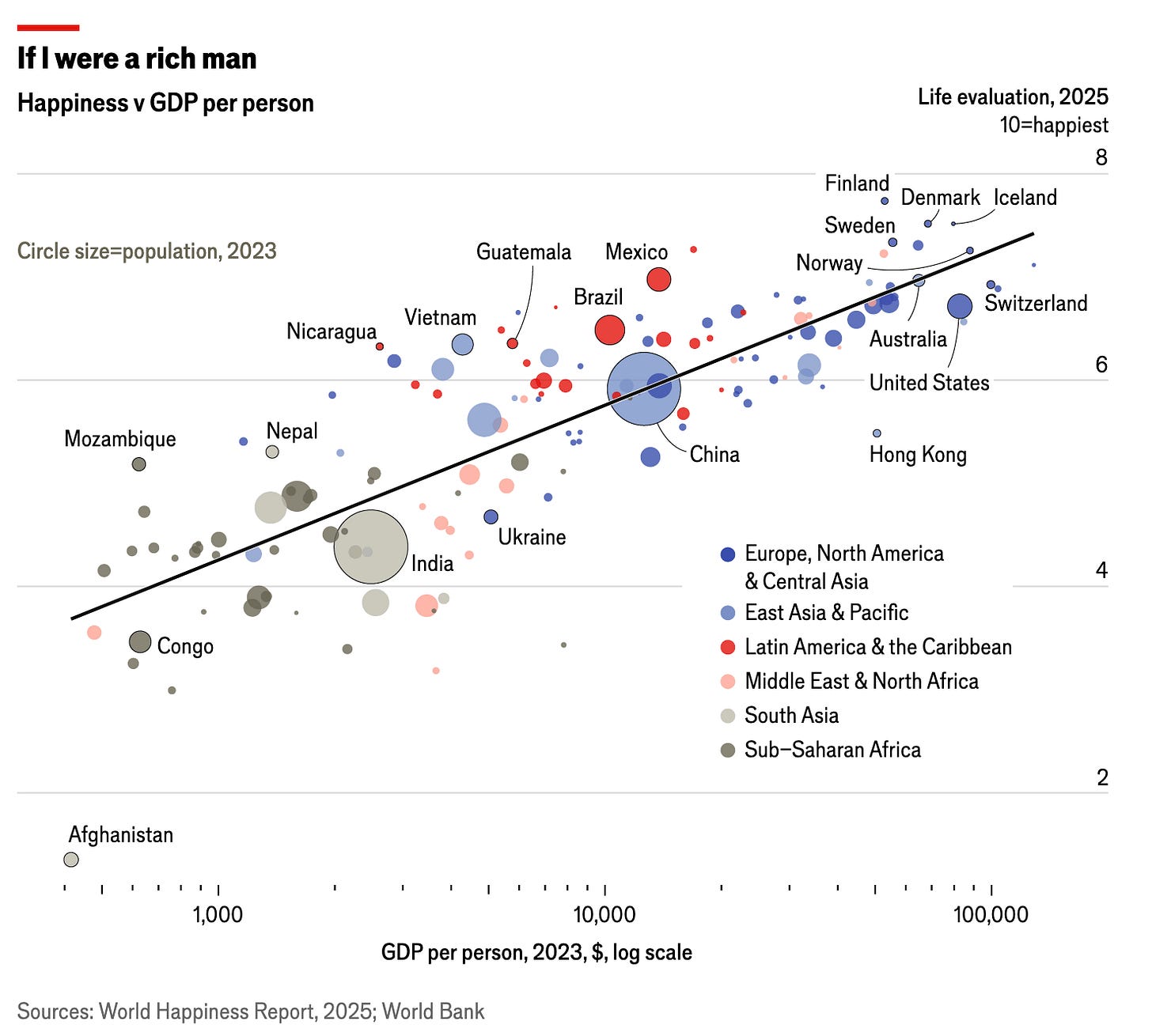10 Interesting Updates on Why a World with More Humans Is Better
In the 100 Billion Humans Series, I defend that we can and should try to put 100B humans on Earth. Here are all the updates relevant to those articles, including solar energy, nuclear, geoengineering, reforestation, vertical farming, oceans, and more. My favorite is 8: How to grow crops in the dark.
1. Wealth = Happiness
One of the arguments of why we should get to 100B humans is because the more humans we are, the richer we are. The richer we are, the happier we are. Here’s clear backup for that second claim: People in richer countries do report much higher life satisfaction.
It does help to live in a Latin American or Nordic country, but wealth is unmistakably one of the strongest factors.
So if more people makes us richer, and being richer makes us happier, let’s make babies, get rich, and spread happiness!
2. We Never Run Out of Anything
Ed Conway wanted to write a series about all the materials we’ve exhausted:
“… in trying to hunt around for minerals we have run out of, I came to an unexpected conclusion. So far, we haven’t really, meaningfully run out of, well, pretty much anything. …
He found malachite, which is oxidized copper for decoration, but we can manufacture something equivalent today. Ed ended up canceling that series.
Jason Crawford also looked for materials we’ve exhausted. His conclusion? The same. We haven’t run out of much. When we have, we’ve always found an alternative.
We have exhausted some things that are not elements though: We’ve driven some animals to extinction, some woods are now too rare to be exploited, there’s limited land left to convert to agriculture. But these are not elements, which are irreplaceable. The materials are replaceable, and we have other ways to produce food without using more land. And the more time passes, the better we are at managing our scarce resources.
Why Is That?
In 1980, the biologist Paul Ehrlich agreed to a bet with the economist Julian Simon on how the prices of five materials would change over the next decade. Ehrlich thought all materials would go up in price, Simon thought the opposite.
Simon won on all five counts.
This is the long-term price of these materials:
As you can see, adjusted for inflation, these elements don’t tend to become more expensive. They are either stable or go slightly down. Why?
The more we grow, the more we demand resources, and the more we produce them. When they become scarce, there’s so much money to be made finding more, that people simply do it.
The Limits to Growth Model Was Bad
In the 100 Billion Humans Series, I was surprised to see the poor quality of the modeling of degrowthers: Every time fearmongers tell us that something really bad is going to happen if we continue this way, I look at their calculations, and there’s some glaring error that would get an entry-level consultant shipped off to Siberia. Apparently, this guy had a similar experience with Limits to Growth, probably the most famous work on the topic.






